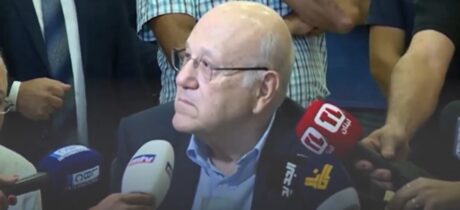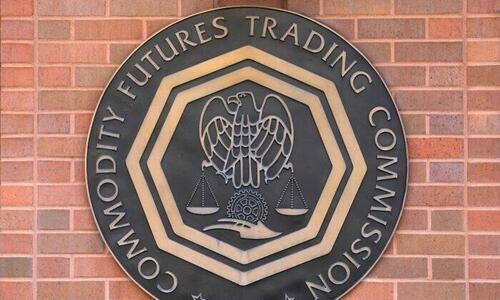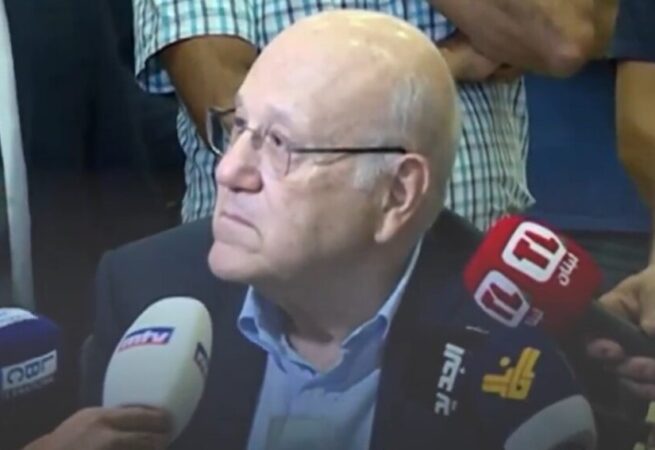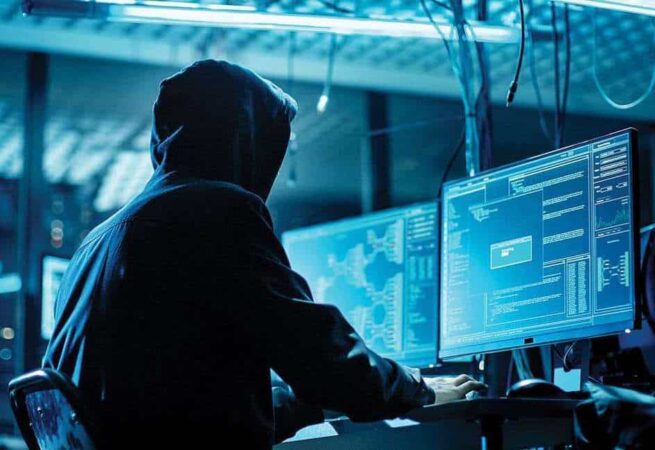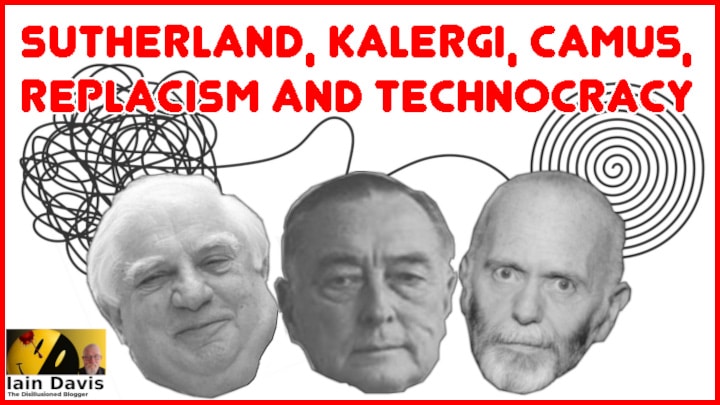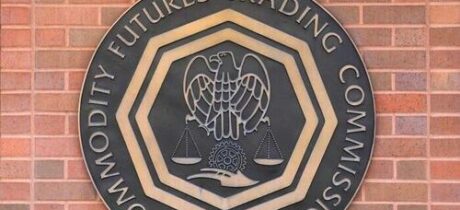

Russia Begins Heavy Retaliation On Ukrainian Capital As Zelensky Breaks Silence On Kursk Invasion
from ZeroHedge:
Now in the sixth day of the Kursk invasion, Ukraine’s President Volodymyr Zelensky explained the following on Sunday, breaking his silence and giving his first official confirmation of the daring cross-border ground operation, “Today, I received several reports from Commander-in-Chief Syrskyii regarding the front lines and our actions to push the war onto the aggressor’s territory.” He added: “Ukraine is proving that it can indeed restore justice and ensure the necessary pressure on the aggressor.”
TRUTH LIVES on at https://sgtreport.tv/
On the same day Russia’s Foreign Ministry has vowed, “A tough response from the Russian army will not be long in coming.” But that response appears to have already begun overnight and into Sunday, as the capital of Kiev has come under heavy missile attack. Missiles did not reach the center of the city, but the suburbs were impacted.
The Associated Press has described that at least four ballistic missiles slammed into the capital region along with 57 Shahed drones sent, citing Ukraine’s air force, which also said its air defenses intercepted 53 of the drones.
Zelensky has alleged that as part of the aerial assault, Russia used a North Korean ballistic missile. “According to preliminary information, the Russians used a North Korean missile in this attack – yet another deliberate terrorist strike against Ukraine,” Zelensky stated on social media. “Pyrotechnic experts are still working to determine the exact data regarding this missile,” he added.
The US Ambassador to Ukraine Bridget Brink has condemned the new Russian aerial assault, saying it killed a man and his four-year old boy.
Originally Posted at https://www.sgtreport.com
Stay Updated with news.freeptomaineradio.com’s Daily Newsletter
Stay informed! Subscribe to our daily newsletter to receive updates on our latest blog posts directly in your inbox. Don’t let important information get buried by big tech.
Current subscribers:
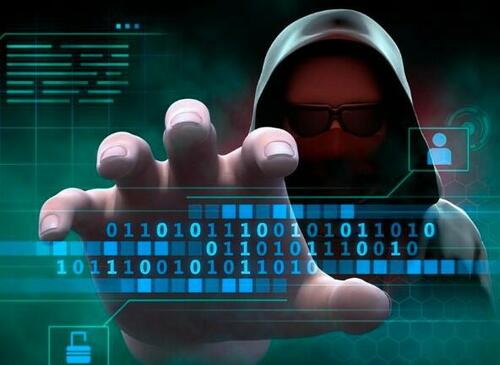
3 Billion People Exposed In Massive Unreported Data Theft
It’s one of the “biggest data breaches ever” and you might be exposed as a result.
Background check company Jerico Pictures Inc., which does business under the name National Public Data was breached back hackers earlier this year, a new lawsuit alleges.
The suit says that as a result, 2.9 billion people have had confidential data exposed and stolen, according to a new report from Mashable.
The worst part is that those impacted by this cyberattack may be unaware of their involvement since National Public Data allegedly collects data from non-public sources without consent.
The breach has exposed information on nearly 3 billion people, including full names, addresses, Social Security numbers, and personal details of both living and deceased relatives.
The Mashable report says that this previously unknown breach’s timing remains unclear.
Plaintiff Christopher Hofmann learned of it in July when an identity theft protection service alerted him that his data had been leaked on the dark web. The hackers posted the “National Public Data” database on a dark web forum in April, seeking $3.5 million from a buyer.
Last month, Mashable also reported on RockYou2024, a massive leak of nearly 10 billion users’ credentials, though it was an updated compilation of older breaches.
With billions of records exposed, the National Public Data breach could be one of the largest ever, comparable to Yahoo’s 2013 breach affecting 3 billion accounts.
Great news if you’re AT&T’s PR department though, we guess…
Loading…
Originally Posted at; https://www.zerohedge.com//
Stay Updated with news.freeptomaineradio.com’s Daily Newsletter
Stay informed! Subscribe to our daily newsletter to receive updates on our latest blog posts directly in your inbox. Don’t let important information get buried by big tech.
Current subscribers:

Appeals Court Rules Against ATF’s Pistol Brace Ban
Appeals Court Rules Against ATF’s Pistol Brace Ban
Authored by Tom Ozimek via The Epoch Times,
A federal appeals court in North Dakota has found that a rule issued by the Bureau of Alcohol Tobacco, Firearms and Explosives (ATF) that restricts ownership of pistol attachments known as stabilizing braces is “arbitrary and capricious,” ordering a lower court to re-consider a motion that would block enforcement of the brace ban.
In a 2–1 decision issued on Aug. 9 by the 8th Circuit Court of Appeals, the majority found that a coalition of 25 Republican attorneys are likely to succeed in their legal challenge against the ATF rule that treats pistols fitted with stabilizing braces as short-barreled rifles and subjects them to various restrictions.
“The Final Rule, as a whole, is arbitrary and capricious because it allows the ATF to arrive at whatever conclusion it wishes without ‘adequately explain[ing] the standard on which its decision is based,’” the majority opinion states. “Thus, we conclude the Coalition is likely to succeed on the merits of its challenge.”
The states and other plaintiffs sued the ATF in February 2023, with U.S. District Judge Daniel Hovland in North Dakota declining to grant their motion for a preliminary injunction and block the rule. Arguing that they were unlikely to succeed on the merits, Hovland found that ATF had adequately explained its rulemaking process.
The majority on the 8th Circuit disagreed, and in their Aug. 9 decision ordered Hovland to reconsider the plaintiffs’ motion for a injunction that would block the ATF rule’s enforcement.
“We reverse the order denying a preliminary injunction and remand with instructions to reconsider the motion consistent with this opinion,” the judges wrote in the majority opinion.
Circuit Judge Bobby Shepherd dissented, saying that the panel should have affirmed Hovland’s order because there was no need for a preliminary injunction after the rule was vacated in June by U.S. District Judge Reed O’Connor in Texas.
O’Connor argued in his 12-page decision that the ATF’s rule that treated roughly 99 percent of pistols fitted with the braces as short-barreled rifles violated the Administrative Procedures Act’s procedural requirements because it was not a “logical outgrowth” of the proposed version of the rule.
“The Court finds that the adaptation of the Final Rule was arbitrary and capricious for two reasons,” O’Connor wrote. “First, the Defendants did not provide a detailed justification for their reversal of the agency’s longstanding position. And second, the Final Rule’s standards are impermissibly vague.”
The judge granted the plaintiffs’ motion for summary judgment and ordered the rule vacated.
The ATF told The Epoch Times that it had no comment on the 8th Circuit ruling.
Iowa Attorney General Brenna Bird and Missouri Attorney General Andrew Bailey, who were among the 25 attorneys general who challenged the ATF rule, praised the 8th Circuit ruling.
“This victory upholds Americans’ constitutional rights and stops the Biden-Harris ATF’s illegal attempt to make millions of law-abiding citizens felons overnight,” Bird said in a statement.
Bailey issued a statement saying: “The Constitution was meant to be a floor, not a ceiling, for our God-given rights. We will continue to do everything in our power to safeguard Missourians’ right to keep and bear arms against encroachment by unelected federal bureaucrats.”
Stabilizing Braces
The pistol stabilizing brace, introduced over a decade ago, was designed to aid disabled individuals and others who require assistance when shooting large-format pistols, such as those built on AR-15 platforms. This accessory attaches to the rear of the pistol and the shooter’s forearm, providing a steadier aim for one-handed shooting.
Restrictions on stabilizing braces have been the subject of intense debate after the ATF proposed them in 2020. Initially, the ATF said in open letters that it did not consider the braces as converting pistols into short-barreled rifles but in the final rule, the agency cited changes in the braces’ design in saying they convert pistols into restricted short-barreled rifles.
In January 2023, the DOJ announced that it had submitted the final rule to the Federal Register, formalizing the regulation that President Joe Biden advocated for in April 2020 after it was found that a man killed 10 people at a grocery store in Boulder, Colorado, using a gun with a stabilizing brace.
The rule went into effect immediately upon publication. Any firearms with stabilizing braces or similar attachments that qualified them under the new rule as short-barreled rifles had to be registered no later than within 120 days, or modified by removing the brace and restored into a regular pistol, or turned into a local ATF office, or destroyed.
Short-barreled rifles are subject to more strict regulations under the National Firearms Act (NFA), with those found in possession of unregistered NFA firearms can face fines of up to $10,000, 10 years in prison, and a felony conviction that disqualifies them from future firearm ownership.
The rule faced pushback from Republicans and gun-rights groups like the National Rifle Association, which pointed out they were originally designed for disabled veterans.
The rule faced several legal challenges. In one of the lawsuits, the 5th Circuit Court of Appeals determined in August 2023 that the rule was finalized without giving the public a meaningful chance to comment on it, in violation of the federal Administrative Procedure Act, which sent the case to O’Connor in Texas, who in June this year vacated the rule, setting up a possible U.S. Supreme Court appeal.
The number of Americans impacted by the ATF’s brace rule is difficult to determine. The ATF estimates that 3 million pistol braces have been sold. Second Amendment advocates say the number is closer to 40 million.
Tyler Durden
Sun, 08/11/2024 – 17:30

Combatting “False Narratives”: D.C. Circuit Refuses To Block Judge Limiting The Speech Of Jan. 6th Defendant
We have previously discussed controversial sentences handed down in cases involving rioters on January 6th, including sentencing orders that, in my view, violate First Amendment rights. That included the case of Daniel Goodwyn, who pleaded guilty to a single misdemeanor count of entering and remaining in a restricted building. That crime would ordinarily not involve any jail time for a first offender.
However, Judge Reggie B. Walton of the United States District Court for the District of Columbia decided that he would use the case to regulate what Goodwyn was reading and communicating with a chilling probation order. After the case was sent back by the D.C. Circuit, Walton doubled down on his extraordinary order. Now the D.C. Circuit has refused to hear an emergency appeal.
Judge Walton has attracted controversy and criticism over his public comments about former President Donald Trump and the other issues. He caused a stir in Washington after doing an interview with CNN in which he rebuked former President Donald Trump for his criticism of judges and their family members. Walton previously called Trump a “charlatan,” and said that “I don’t think he cares about democracy, only power.”
Critics charged that Walton’s public statements ran afoul of Canon 3A(6) of the Code of Conduct for United States Judges, which states:
“A judge should not make public comment on the merits of a matter pending or impending in any court.”
Walton then triggered criticism over his handling of the Goodwin case.
The case involved Daniel Goodwyn, 35, of Corinth, Texas, who pleaded guilty on Jan. 31, 2023, to one misdemeanor count of entering and remaining in a restricted building or grounds without lawful authority. That is a relatively minor offense, but Walton imposed a 60-day jail sentence in June 2023 with these ongoing conditions on his online reading and speech.
Walton reportedly noted that Goodwyn spread “disinformation” during a broadcast of “Tucker Carlson Tonight” on March 14, 2023 and ordered that Mr. Goodwyn’s computer be subject to “monitoring and inspection” by a probation agent to check if he spread Jan. 6 disinformation during the term of his supervised release.
After accepting the plea to a single misdemeanor, Walton expressed scorn for Goodwyn appearing “gleeful” on Jan. 6 and his “egging on” other rioters.
He asked his defense counsel “why I should feel that he doesn’t pose a risk to our democracy?”
As a condition for supervised release, DOJ pushed the monitoring conditions and found a judge who seemed eager to impose it.
The order reflects the utter impunity shown by the Justice Department in its pursuit of January 6th defendants. Justice Department official Michael Sherwin proudly declared in a television interview that “our office wanted to ensure that there was shock and awe … it worked because we saw through media posts that people were afraid to come back to D.C. because they’re, like, ‘If we go there, we’re gonna get charged.’ … We wanted to take out those individuals that essentially were thumbing their noses at the public for what they did.”
Sherwin was celebrated for his pledge to use such draconian means to send a message to others in the country. (Sherwin has left the Justice Department and is now a partner at Kobre & Kim).
Walton was rebuked by the United States Court of Appeals for the District of Columbia for a surveillance order of Goodwin to detect any spreading of “disinformation” or “misinformation.”
In my new book, “The Indispensable Right: Free Speech in an Age of Rage,” I discussed concerns over the cases like Goodwyn’s and their implications for free speech. I participated in the coverage on January 6th and criticized President Trump’s speech while he was giving it. I disagreed with the legal claims made to oppose certification. However, the “shock and awe” campaign of the Justice Department, in my view, has trampled on free speech rights in cases that range from Goodwyn to the prosecutions of Trump himself.
Many of us were relieved when appellate judges (Gregory Katsas, Neomi Rao, and Bradley Garcia) rebuked Walton and held that “[t]he district court plainly erred in imposing the computer-monitoring condition without considering whether it was ‘reasonably related’ to the relevant sentencing factors and involved ‘no greater deprivation of liberty than is reasonably necessary’ to achieve the purposes behind the sentencing.”
They sent the case back but, to the surprise of few, Judge Walton proceeded to double down on the monitoring while implausibly declaring “I don’t want to chill anyone’s First Amendment rights.”
For some reason, Walton believes that barring an individual from reviewing and engaging in political speech does not “chill” his First Amendment rights.
Most of us were appalled by the riot and the underlying views of figures like Goodwyn, who is a self-proclaimed member of the Proud Boys. He was rightfully arrested and should be punished for his conduct. The question is not the legitimacy of punishment, but the scope of that punishment.
Prosecutor Brian Brady detailed how the Justice Department has in place a new system using artificial intelligence to monitor the reading and statements of citizens like Goodwyn. The Justice Department brushed aside the free speech concerns since Goodwyn remains under court supervision, even though he pleaded guilty to only a single misdemeanor.
Brady described a virtual AI driven thought program. The justification was that Goodwyn refused to abandon his extreme political views:
“Throughout the pendency of Goodwyn’s case, he has made untruthful statements regarding his conduct and the events of the day, he has used websites and social media to place targets on police officers who defended the Capitol, and he has used these platforms to publish and view extremist media. Imposing the requested [monitoring] conditions would protect the public from further dissemination of misinformation… [and] provide specific deterrence from him committing similar crimes.”
So now federal courts can use a single misdemeanor for unlawful entry in a federal building for less than 40 seconds to “protect the public from … dissemination of misinformation” on the government.
That was all Walton needed to hear. Relying on a record supplied by the Justice Department, Walton said in the hearing that Goodwyn is still engaging “in the same type of rhetoric” that fomented the Jan. 6 violence. He added that he was concerned about Goodwyn spreading “false narratives” when we are “on the heels of another election.”
Walton merely added the DOJ record to his renewed sentencing conditions.
Defense counsel then returned to the D.C. Circuit to seek an emergency stay but Judges Florence Pan and Bradley Garcia denied the motion, holding that “Appellant has not satisfied the stringent requirements for a stay pending appeal” to prevent further “false narratives.”
That drew a pointed dissent from Judge Gregory Katsas who stated:
Daniel Goodwyn pleaded guilty to one count of knowingly entering or remaining in a restricted building or grounds, in violation of 18 U.S.C. § 1752(a)(1). Goodwyn entered the Capitol and remained inside for a total of 36 seconds. He did not use force to enter, did not assault police officers, and neither took nor damaged any government property. When police instructed Goodwyn to leave the building, he did so.
…
On appeal, this Court vacated the condition … We further instructed the district court, if it wished to impose a new computer- monitoring condition on remand, to “explain its reasoning,” to “develop the record in support of its decision,” and to ensure that the condition complies with section 3583(d) and with the Constitution.
The district court reimposed the same condition on remand. In an oral hearing, the court said that Goodwyn had made statements on social media that “can be, it seems to me, construed as” urging a repeat of January 6, particularly “on the heels of another election.” In its written order, the court elaborated on what it called Goodwyn’s “concerning online activity.” This included posting exhortations to “#StopTheSteal!” and “#FightForTrump,” soliciting donations to fund his travel to Washington, posing for a livestream while inside the Capitol, confirming his presence there by text, and tweeting opinions such as: “They WANT a revolution. They’re proving our point. They don’t represent us. They hate us.” Id. at 3–4. In addressing what the court described as Goodwyn pushing “false narratives” about January 6 after-the-fact, the court, quoting from the government’s brief, led with the fact Goodwyn “sat for an interview with Tucker Carlson on Fox News Channel.” Id. at 4. Finally, in concluding that computer monitoring was reasonably related to Goodwyn’s offense, the court reasoned that monitoring would prevent Goodwyn from raising funds to support potential future crimes and would separate him “from extremist media, rehabilitating him.”
Judge Katsas stated that Goodwyn was likely to prevail on the merits and that his colleagues allowed the denial of First Amendment rights to continue in the interim.
The Walton order reflects the erosion of support for the First Amendment, even on our courts. It is reminiscent of our previous discussion of how courts have criminalized “toxic ideologies” as part of the crackdown on free speech in the United Kingdom.
Here is the D.C. Circuit order: United States v. Goodwyn
Loading…
Originally Posted at; https://www.zerohedge.com//
Stay Updated with news.freeptomaineradio.com’s Daily Newsletter
Stay informed! Subscribe to our daily newsletter to receive updates on our latest blog posts directly in your inbox. Don’t let important information get buried by big tech.
Current subscribers:

A Question Of Timing
A Question Of Timing
Authored by Jeff Thomas via InternationalMan.com,
France, 1788. Russia, 1916. Germany, 1937.
These dates have something in common.
In France in 1788, political conditions had been getting questionable, but there was no apparent need to panic. That came the following year, with the sudden outbreak of the French Revolution. From that point on, it was dangerous even to go out in the streets of Paris. So many people had become enraged, that even if you were not a member of the aristocracy, you could easily become collateral damage.
And so, it would have been wise if, in 1788, you had decided to pack your bags and remove yourself from the epicentre of what was developing.
Similarly, in 1916, Russia was at war with the Germans, and the populace was becoming increasingly vocal about the state of the economy. Yet, even the czar believed that the people simply had to accept the situation and muddle through.
A year later, soldiers were deserting, a host of political wannabes were vying for power and anyone who simply wanted to be left alone to run his own life was now afraid to go out on the streets.
And of course, in Germany, prior to Kristallnacht in November of 1938, all the warnings were there that the country was beginning to unravel, but virtually everyone assumed that, somehow, things would be all right.
A year later, Germany was at war with five nations and had invaded three others. People were being rounded up, imprisoned and/or shot. Those who sought to get out of Germany found that they were no longer allowed to do so.
And history is full of similar cases. In hindsight, the warning signs have always been there: an increasingly autocratic government, increasingly volatile and irrational political struggles, mounting debt, increased taxation, a declining economy and the removal of basic freedoms “for the greater good.”
In 1929, if you lived in the US, you might have just paid $2,735 for a new Packard Custom 8 Roadster – a means of showing off your recent gains in the stock market. A year later, you might well have offered it for sale for only $100, as, for all your previous price offers, there were no takers. And you, like they, had been wiped out in the crash, and $100 meant the difference between eating and not eating.
In 1958, you might have been enjoying a daiquiri at El Floridita in Havana and joking to friends about ‘las barbudas’ – the tiny rebel force hiding in the Sierra Madre. A year later, the joking had ended and private businesses like El Floridita had been nationalized by the new government.
For millennia, the playbook has been the same. Countries that had been wonderful to live in, began to deteriorate from within, and the great majority of residents had failed to read the tea leaves – the warning signs that, in the future, conditions were not going to get better; they were going to get worse.
But why should this be so?
Well, in 1787, in the midst of the Scottish Enlightenment that gave rise to Adam Smith, economist and historian Alexander Tytler is credited as having said:
A democracy is always temporary in nature; it simply cannot exist as a permanent form of government. A democracy will continue to exist up until the time that voters discover they can vote themselves generous gifts from the public treasury. From that moment on, the majority always votes for the candidates who promise the most benefits from the public treasury, with the result that every democracy will finally collapse due to loose fiscal policy, which is always followed by a dictatorship.
He further noted that the latter stages of any such decline are marked, first, by complacency, then by apathy. The final stage is invariably one of bondage.
In some cases of collapse, the country is taken over by an outside force, but invariably, as stated above, the rot always starts from within. It’s simply human nature for the majority of any population, when passing through challenging times, to fall prey to promises that, somehow, a change in the form of government can and will result in the elimination of problematic conditions.
But how do those who make such claims sell their ideas? Do they suggest that everyone should work harder and practice a greater level of abnegation?
Well, no. Although such people may exist and may even become outspoken, they are, historically, never the individuals whom the majority of the population follow. Invariably, the majority (having become complacent and pathetic), choose those who promise to take from one group and share the spoils amongst those who are less productive.
As illogical as this promise is, most people, even if they doubt the reality of the claim, tend to think, “Well, it couldn’t be any worse. I might get something, so let’s give it a try.”
A very simple case in point is the Bahamas election of 1967, in which Bahamians elected their first ‘man of the people’ as their premier. Under his rhetoric of ‘Bahamas for Bahamians,’ he promised the large underclass of Bahamians that he would take the top jobs away from the British bankers and other business leaders and that the spoils would go to the average Bahamian.
Of particular interest were the luxury vehicles driven by successful businessmen. Bahamians in their thousands imagined that the senior staff in banks would be fired, that they themselves would be given the jobs… and the fancy Jaguar Saloons.
And that did happen to some extent. Those who were loyal to Prime Minister Lynden Pindling did move up to management positions overnight – positions for which they were not qualified. Not surprisingly, they were unable to learn decades of knowledge overnight. They subsequently either lost their new jobs, or the banks lost business on a massive scale.
And the Jaguars? Well, it turned out that there were thousands of Bahamians for every Jaguar that existed, and for 99.9%, there would be no previously imagined spoils.
Instead, their lives soon headed south in the coming months and years, as wealth flowed away from the Bahamas, most of it never to return.
In other countries the details have often been quite a bit more complex, but the scenario and the outcome have been the same.
Once the warning signs begin to appear, it’s important to remember that, historically, the process never reverses itself. An apathetic population is not one that will suddenly decide to roll up its sleeves and get the country, once again, on a productive footing.
Invariably, the population jumps on the toboggan of empty promises and rides it downhill until it reaches the economic bottom.
And so, circumventing such a situation becomes a question of timing. When it becomes clear that the telltale signs are reappearing once again, those who are wise will acknowledge that the sands are running out and it’s time to move on.
The signs tend to be the same in any locale, in any era. They’re quite easy to see. The difficult part is choosing to make an exit whilst it’s still easy to do so.
* * *
Unfortunately, there’s little any individual can practically do to change the trajectory of broke governments in need of more cash. There are still steps you can take to ensure you survive the turmoil with your money intact. That’s precisely why bestselling author Doug Casey and his colleagues just released an urgent new PDF report that explains what could come next and what you can do about it. Click here to download it now.
Tyler Durden
Sun, 08/11/2024 – 16:55

Secret Service Apologizes For Picking Lock, Breaking Into Local Salon After Covering-Up Security Cam
Secret Service Apologizes For Picking Lock, Breaking Into Local Salon After Covering-Up Security Cam
The Secret Service has apologized to a Massachusetts salon owner after her security camera showed individuals breaking into her business to use the bathroom while on assignment for a nearby VP Kamala Harris fundraiser.
Berkshires salon owner Alicia Powers says someone picked her lock and broke into her store to use the bathroom after a Secret Service officer covered a camera with tape.
Those using the bathroom included a pair in emergency medical uniforms, while a person in a camouflage law enforcement uniform and another in a dark suit with a white shirt could be seen guarding the door.
The U.S. Secret Service is apologizing to a Massachusetts salon owner after an agent covered her security camera with duct tape and broke into her salon by picking the lock so that its bathroom could be used by various people for a two-hour period.
After the two-hour period,… pic.twitter.com/s4qSFtebn0
— Yashar Ali 🐘 (@yashar) August 11, 2024
According to the NY Post:
A Secret Service rep was adamant that agents would not break into buildings like that — but did not deny that an officer covered her camera with tape, an act that was captured by surveillance footage, and appeared to cop some sort of mea culpa in a statement.
“The Secret Service has since communicated with the affected business owner. We hold these relationships in the highest regard and our personnel would not enter, or instruct our partners to enter, a business without the owner’s permission,” said spox Melissa McKenzie.
According to Business Insider, the head of the Secret Service’s Boston-based field office called the salon owner to apologize.
“He said to me everything that was done was done very wrong,” said Powers. “They were not supposed to tape my camera without permission. They were not supposed to enter the building without permission.”
According to Powers, the incident took place on July 27, prior to Harris’ first major in-person fundraiser since President Biden announced he was dropping out of the race. The salon is held behind the Colonial Theatre, where Harris’ event was held. She added that her salon was closed before the fundraiser due to the chaotic security presence.
“They had a bunch of people in and out of here doing a couple of bomb sweeps again — totally understand what they have to do, due to the nature of the situation,” she told Insider. “And at that point, my team felt like it was a little bit chaotic, and we just made the decision to close for Saturday.”
After the tape was placed on the camera, her interior cameras detected four other people over a 90 minute span.
“There were several people in and out for about an hour and a half — just using my bathroom, the alarms going off, using my counter, with no permission,” she told the outlet. “And then when they were done using the bathroom for two hours, they left and left my building completely unlocked and did not take the tape off the camera.
“Whoever was visiting, whether it was a celebrity or not, I probably would’ve opened the door and made them coffee and brought in donuts to make it a great afternoon for them,” she said. “But they didn’t even have the audacity to ask for permission. They just helped themselves.”
Tyler Durden
Sun, 08/11/2024 – 15:45
Bitcoin Is Change Management
Bitcoin Is Change Management
Authored by Kane KcGukin via The Mesh Point,
For the past few years, after every Bitcoin Conference, I take time to reflect on my learnings and observations. What did I see, and what does it mean for Bitcoin’s future and the broader financial system?
Unfortunately, this year, Bitcoin’s main event was hijacked by politicians.
Their presence was so pervasive it degraded the ability to float freely, meet people, and learn from the vast set of stages talking about all things Bitcoin. On the one hand, it’s not exactly a surprise that political interests are laser focused on Bitcoin. On the other hand, it’s difficult to witness Bitcoin being used as a pandering tool.
As with any setback, we must ask ourselves. What is the opportunity? Where is the signal amongst the noise?
Bitcoin Is Much More Than “Number Go Up”
In all honesty, the “number go up” narrative is one of the most fiat-brained ideas in Bitcoin. That doesn’t mean the show can’t go on. The conference this year proved Bitcoin will outlast longer any naysaying from TradFi skeptics.
Bill Mill IV summed them up nicely: “Most people work for somebody else… even if you believe in Bitcoin and you buy on behalf of somebody else, or one of your bosses doesn’t like it. You’re done. You’re head’s chopped off. Whereas, if it goes right, and somebody that you work for didn’t like it; you get a begrudging pat on the back. So, everything comes down to incentives.”
So, why is there such confidence in Bitcoin? Because of three things:
- The Nakamoto Stage opening presentation.
- The focus on Bitcoin as a solution to our energy infrastructure problem.
- Edward Snowden, 4th Turnings, and the power of paradigm shifts
Mastering Strategic Thinking
To kick off the conference, on the Nakamoto main stage, was Sophie von Laer’s talk: Mastering Strategic Thinking & Leading Bitcoin Companies Effectively.
What stood out most was it felt like a subtle psychological prep for what is to come and what types of individuals will be recruited to lead the charge. The talk felt like a high-level intelligence briefing, with its nuanced linguistic framing and psychological messaging. While I can’t say for certain if this was intentional, the theme became increasingly apparent over the next few hours and days.
There was a heavy government influence throughout Bitcoin 2024. Whether it be Trump, one of the numerous politicians, or Edward Snowden it was made clear that Bitcoin’s network would be a pivotal tool for decades to come.
Sophie’s descriptions of a Strategic Maverick, the strategic mindset, new paradigms, and the necessity of disconnection to achieve connection, felt very foretelling of what will be required for the chaos we’re living through (see 4th Turning).
Her thoughts on how we program and condition leaders seemed to outline an expectation for Bitcoiners who will inevitably partner with political forces as they bare down.
The framing around “thinking about not just your own needs but the needs of those around you” sounded much more moral, principled, and unifying than the divisiveness of our current DEI handbook.
- Strategic Plan = continuous improvement and evolution
- Strategic Alliance = it takes a village, a tribe
- “Knowing the intersection of the things going on around you.”
- Adaptive Resilience = manage change effectively
- “Culture that fosters the change that is going on.”
- Positive Psychology = focus on the things you do well in life.
- A culture that thinks together becomes more coherent. We’ve got a lot of work to do based on where we stand today.
Strategic Maverick’s understand Adaptive Resilience: “The period of rest after change allows you to become the thing you want. Someone truly becomes adaptive in this time.” A framing, or warning? It seemed fitting for Bitcoin and Bitcoiners alike, amid this paradigm shift.
Bitcoin: an Energy Infrastructure Solution
Beyond politics, Bitcoin’s role in revamping the US energy infrastructure was a major focus of the conference. The recurring theme was that we are still early in this new paradigm.
Tennessee Senator Bill Hagerty made a great point in his talk when he highlighted that post-WWII was about expanding people, goods, and energy use in the US. To continue to support all that growth, we need more energy efficiency. And, caught in the middle of all the economic growth and the increasing energy demand is our money.
Bitcoin miners provide solutions to both monetary and energy challenges. They help balance energy use and, more importantly, generate revenue for utility companies by purchasing excess energy that would otherwise be wasted. As Harry Sudock succinctly put it, “Revenue cures everything.”
What better way to solve an energy issue than with machines that can switch on and off, easily balancing our stressed grid?
These machines provide revenue during periods that would otherwise be unprofitable. Additionally, they offer the flexibility to shut down during peak energy consumption, preventing the drain on scarce power.
Our modern economy relies heavily on advanced technologies. As we move forward, we’ll require significant updates and optimizations to our energy infrastructure, networks, and server farms. Each of these technologies has an exponential energy component. Bitcoin is the only solution that computes both money and energy in exponential form.
Edward Snowden: “Cast a Vote, Don’t Join a Cult”
Snowden’s greatest point was dousing cold water on the political parade. He attempted to bring us back down to earth a bit by offering several reminders that neither political party is as much your friend, as they are just out to get Bitcoiners to love them. Citing past behaviors, he urged us to remain caustious with this quote:
“for in every country of the world, I believe, the avarice and injustice of princes and sovereign states, abusing the confidence of their subjects, have by degrees diminished the real quantity of metal, which had been originally contained in their coins.” -Adam Smith
Edward reminded us that technologies have historically been designed to benefit “them”, organizations and politicians. This perspective makes it easier to envision a future where privacy diminishes as quickly as we can now connect, considering the six degrees of separation.
He touched briefly on the moral dilemma we face. Reminding us that our internal system feels broken, because of our broken money. With political interference, we may have started a new version of the same game, but with new rules. In this game, we should all be prepared to make difficult decisions.
Among many enlightening quotes Snowden made, I thought these two are worth remembering:
“We are competing constantly and cooperating rarely. We need to change that.”
“The internet is broken because the institution is competing against the individual, and the individual against another individual.”
Peter Theil made reference to the idea behind the first quote in his book Zero to One, and the second quote offered powerful insights to the situation we’re watching unfold.
Tying it All Together
The message was clear throughout Bitcoin 2024 we are headed for a paradigm shift on the other side of this 4th turning, and the Bitcoin tribe is believed to have the leaders that will shape the culture of our future.
Bitcoin is now mainstream. It’s still early in the adoption phase, but the Bitcoin network will be a crucial tool for our future.
How that future is shaped, and Bitcoin’s role in our financial system, will depend on which side of the aisle gains control and how they choose to use it. Will it be an asset and means to rebuild our aging energy infrastructure or is it just another monitoring device? Only time will tell.
* * *
Get on the Bombthrower mailing list here and receive a free copy of The Crypto Capitalist Manifesto and The CBDC Survival Guide when it drops. Subscribe to Kane McGukin’s Substack here.
Tyler Durden
Sun, 08/11/2024 – 15:10

ATF Dispatched After McMansion Explodes Near Baltimore
A McMansion in Harford County, Maryland, exploded on Sunday morning, resulting in one fatality at the 2300 block of Arthur Woods Drive in Bel Air.
Harford County Fire and EMS Association spokesman Jeffrey Sexton told WBAL TV that emergency dispatchers received a call early this morning reporting a natural gas leak at the house. Shortly after, their hotlines were flooded with reports of an explosion.
Neighborhood doorbell camera captured the sound of a house exploding in the 2300 block of Arthur Woods Drive in Bel Air on Sunday morning.
You can find all the details on our website https://t.co/0ufS0dHAon pic.twitter.com/0nOyJs0xBp
— WMAR-2 News (@WMAR2News) August 11, 2024
Local utility company Baltimore Gas and Electric was aware of the NatGas leak, and contractors were on-site at the time of the explosion that obliterated the house and damaged surrounding structures in the neighborhood.
One of our viewers, Sam Casale, sent us this drone video captured minutes after a home on Arthur Woods Drive in Bel Air reportedly exploded killing at least one person. You can see the home is reduced to rubble. Firefighters are still searching the debris. @wbaltv11 pic.twitter.com/5LkFFfBrfj
— Breana Ross (@breanarossWBAL) August 11, 2024
“This is one of the largest explosions I’ve seen, especially in Harford County,” Master Deputy State Fire Marshal Oliver Alkire told WBAL.
Update on apparent house explosion. Volunteer Firefighters continue to search for victims. No current public threat. @HarfordCoDES Special Operations is responding with special equipment to search the rubble.
Media staging is Abingdon Library 2510 South Tollgate Road, Abingdon. https://t.co/B7srld2j6N pic.twitter.com/H6g08Iwjwb
— Harford Co., MD Fire & EMS (@HarforCoFireEMS) August 11, 2024
House explosion in Bel Air pic.twitter.com/O1MyjY8hMY
— Megan Weeks (@sparkyweeks25) August 11, 2024
Emergency officials said one of the workers and a neighbor were injured. The deceased victim’s identity has not been released.
The home was for sale at the time. Investigators are still trying to determine whether the homeowner was inside during the incident.
Alkire added that the Bureau of Alcohol, Tobacco, Firearms, and Explosives is en route to the scene.
Loading…
Originally Posted at; https://www.zerohedge.com//
Stay Updated with news.freeptomaineradio.com’s Daily Newsletter
Stay informed! Subscribe to our daily newsletter to receive updates on our latest blog posts directly in your inbox. Don’t let important information get buried by big tech.
Current subscribers:

Russiagate Continues To Survive Like A Sci-Fi Monster Resilient To Bullets
Authored by Ray McGovern via Consortium News,
Russiagate continues to survive like a science fiction monster resilient to bullets.
The latest effort at rehabilitating it is an interview by Adam Rawnsley in the current issue of Rolling Stone magazine of one Michael van Landingham, an intelligence analyst who is proud of having written the first draft of the cornerstone “analysis” of Russiagate, the so-called Intelligence Community Assessment.
The ICA blamed the Russians for helping Trump defeat Hillary Clinton in 2016. It was released two weeks before Trump assumed office. The thoroughly politicized assessment was an embarrassment to the profession of intelligence.
Worse, it was consequential in emasculating Trump to prevent him from working for a more decent relationship with Russia.
In July 2018, Ambassador Jack Matlock (the last U.S. envoy to the Soviet Union), was moved to write his own stinging assessment of the “Assessment” under the title: “Former US Envoy to Moscow Calls Intelligence Report on Alleged Russian Interference ‘Politically Motivated.’”
In January 2019, I wrote the following about the ICA:
“A glance at the title of the Intelligence Community Assessment (ICA) (which was not endorsed by the whole community) — ‘Assessing Russian Activities and Intentions in Recent US Elections’ — would suffice to show that the widely respected and independently-minded State Department intelligence bureau should have been included. State intelligence had demurred on several points made in the Oct. 2002 Estimate on Iraq, and even insisted on including a footnote of dissent.
James Clapper, then director of national intelligence who put together the ICA, knew that all too well. So he evidently thought it would be better not to involve troublesome dissenters, or even inform them what was afoot.
Similarly, the Defense Intelligence Agency should have been included, particularly since it has considerable expertise on the G.R.U., the Russian military intelligence agency, which has been blamed for Russian hacking of the DNC emails.
But DIA, too, has an independent streak and, in fact, is capable of reaching judgments Clapper would reject as anathema. …
With help from the Times and other mainstream media, Clapper, mostly by his silence, was able to foster the charade that the ICA was actually a bonafide product of the entire intelligence community for as long as he could get away with it. After four months it came time to fess up that the ICA had not been prepared, as Secretary Clinton and the media kept claiming, by ‘all 17 intelligence agencies.’
In fact, Clapper went one better, proudly asserting — with striking naiveté — that the ICA writers were ‘handpicked analysts’ from only the F.B.I., C.I.A., and NSA. He may have thought that this would enhance the ICA’s credibility. It is a no-brainer, however, that when you want handpicked answers, you better handpick the analysts. And so he did.”
[See: The January 2017 ‘Assessment’ on Russiagate]
Buried in Annex B of the ICA is this curious disclaimer:
“Assessments are based on collected information, which is often incomplete or fragmentary, as well as logic, argumentation, and precedents. … High confidence in a judgment does not imply that the assessment is a fact or a certainty; such judgments might be wrong.”
Small wonder, then, that a New York Times report on the day the ICA was released noted:
“What is missing from the public report is what many Americans most eagerly anticipated: hard evidence to back up the agencies’ claims that the Russian government engineered the election attack. That is a significant omission…”
Burying Obama’s Role
Mainstream journalism has successfully buried parts of the Russiagate story, including the role played by former President Barack Obama.
Was Obama aware of the “Russian hack” chicanery? There’s ample evidence he was “all in.” More than a month before the 2016 election, while the F.B.I. was still waiting for the findings of cyber-firm CrowdStrike, which the Democratic Party had hired in place of the F.B.I. to find out who had breached their servers, Obama told Clapper and Dept. of Homeland Security head Jeh Johnson not to wait.
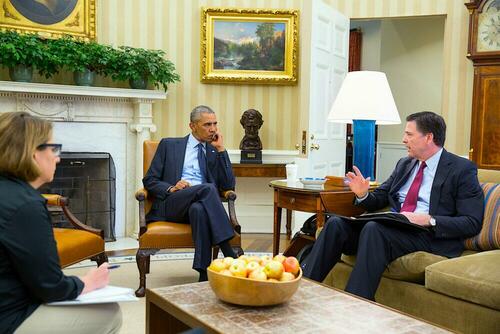
So with the election looming, the two dutifully published a Joint Statement on Oct. 7, 2016:
“The U.S. Intelligence Community (USIC) is confident that the Russian Government directed the recent compromises of e-mails from US persons and institutions, including from US political organizations. The recent disclosures of alleged hacked e-mails on sites like DCLeaks.com and WikiLeaks and by the Guccifer 2.0 online persona are consistent with the methods and motivations of Russian-directed efforts. These thefts and disclosures are intended to interfere with the US election process. … “
Obama’s role was revealed in 2022 when the F.B.I. was forced to make public F.B.I. emails in connection with the trial of fellow Russiagate plotter, Democratic lawyer Michael Sussmann
Clapper and the C.I.A., F.B.I., and NSA directors briefed Obama on the ICA on Jan. 5, 2017. That was the day before they gave it personally to President-elect Donald Trump, telling him it showed the Russians helped him win, and that it had just been made public.
On Jan. 18, 2017, at his final press conference, Obama used lawyerly language in an awkward attempt to cover his derriere:
“The conclusions of the intelligence community with respect to the Russian hacking were not conclusive as to whether WikiLeaks was witting or not in being the conduit through which we heard about the DNC e-mails that were leaked.”
So we ended up with “inconclusive conclusions” on that admittedly crucial point… and, for good measure, use of both words — “hacking” and “leaked.”
The tale that Russia hacked the Democratic National Committee in 2016 was then disproved on Dec. 5, 2017 by the head of CrowdStrike’s sworn testimony to Congress. Shawn Henry told the House Intelligence committee behind closed doors that CrowdStrike found no evidence that anyone had successfully hacked the DNC servers.
But it is still widely believed because The New York Times and other Democrat-allied corporate media never reported on that testimony when it was finally made public on May 7, 2020.
Enter Michael van Landingham
Rolling Stone’s article on July 28 about van Landingham says he is still proud of his role as one of the “hand-picked analysts” in drafting the discredited ICA.
The piece is entitled: “He Confirmed Russia Meddled in 2016 to Help Trump. Now, He’s Speaking Out.” It says: “Trump viewed the 2017 intel report as his ‘Achilles heel.’ The analyst who wrote it opens up about Trump, Russia and what really happened in 2016.”
Without ever mentioning that the conclusions of the ICA were proven false, by Henry’s testimony and the conclusions of Special Counsel Robert Mueller’s investigation that found no evidence of Trump-Russia “collusion,” Rolling Stone says:
“The 2017 Intelligence Community Assessment (ICA), dubbed ‘Assessing Russian Activities and Intentions in Recent U.S. Elections,’ was one of the most consequential documents in modern American history. It helped trigger investigations by the House and Senate intelligence committees and a special counsel investigation, and it fueled an eight-year-long grudge that Trump has nursed against the intelligence community.”
Rawnsley writes in Rolling Stone the following as gospel truth, without providing any evidence to back it up.
“When WikiLeaks published a tranche of [John] Podesta’s emails in late October, the link between the Russian hackers and the releases became undeniable. The dump contained the original spear phishing message that Russian hackers had used to trick Podesta into coughing up his password. News outlets quickly seized on the email, crediting it for what it was: proof that the Russians were behind the campaign.”
Because Rawnsley didn’t tell us, it’s not clear how this “spear phishing message” provides “undeniable” proof that Russia was behind it. Consortium News has contacted Rawnsley to provide more detail to back up his assertion.
Craig Murray, the former British ambassador to Uzbekistan and close friend of Julian Assange, suggested to Scott Horton on Horton’s radio show in 2016 that the DNC leak and the Podesta leak came from two different sources, neither of them the Russian government.
“The Podesta emails and the DNC emails are, of course, two separate things and we shouldn’t conclude that they both have the same source,” Murray said. “In both cases we’re talking of a leak, not a hack, in that the person who was responsible for getting that information out had legal access to that information.”
Reading between the lines of the interview, one could interpret Murray’s comments as suggesting that the DNC leak came from a Democratic source and that the Podesta leak came from someone inside the U.S. intelligence community, which may have been monitoring John Podesta’s emails because the Podesta Group, which he founded with his brother Tony, served as a registered “foreign agent” for Saudi Arabia.
“John Podesta was a paid lobbyist for the Saudi government,” Murray noted. “If the American security services were not watching the communications of the Saudi government’s paid lobbyist in Washington, then the American security services would not be doing their job. … His communications are going to be of interest to a great number of other security services as well.”
Leak by Americans
Horton then asked, “Is it fair to say that you’re saying that the Podesta leak came from inside the intelligence services, NSA [the electronic spying National Security Agency] or another agency?”
“I think what I said was certainly compatible with that kind of interpretation, yeah,” Murray responded. “In both cases they are leaks by Americans.”
William Binney, a former U.S. National Security Agency technical director, told Consortium News this regarding Rolling Stone‘s assertion about the Podesta emails:
“Saying something does not make it so. There is no evidence the phishers or hackers were Russian. In today’s networks, you really have to have the underlying internet protocol (IP nr) or device medium access control (MAC nr) to show the routing to/from [sending and receiving] devices to show exfiltration plus trace route evidence to show if that data went any further.
[In other words, you would need the unique computer addresses of the hacked and the hacker and anyone they may have relayed it to, if it were a hack.]
[Rawnsley] gives none of this type of data. So, until he provides this type of data, I view his statements as an opinion and not worth much at all.
The whole world-wide network has to have these numbers to get data from point A to point B in the world. No one (NSA included) has shown this data going to Wikileaks for publication. The 5EYES have Wikileaks under cast iron cover/analysis and would know this and report it.”

“There is one more aspect that’s important to take into account,” Binney added. “It’s the network log. This contains a record of every instruction sent on the network along with addresses for the sender and receiver. It’s held for a period of time according to storage allocated to it.”
Binney said:
“So, if there’s a hack, then the instruction to achieve the hack is in the log. Remember, Crowd Strike did the analysis of the DNC server all through this time and never talked about the network log. Now, Podesta’s computer does not have a network log, but the DNC and worldwide network providers do.”
Binney told CN that he proposed automated analysis of the worldwide log for the NSA in 1992, “but they refused it as it would expose all the money and program corruption in NSA contracts.”
Binney said he was putting that function into the ThinThread program in 1999/2000 that he was developing for the NSA, but the agency “removed it in 2001 after 9/11.”
A report by the private cybersecurity firm SecureWorks in June 2016 assessed with “moderate confidence” that a group identified as APT28, nicknamed “Fancy Bear” among other names “operating from the Russian Federation … gathering intelligence on behalf of the Russian government” was behind the Podesta phishing, though as Binney points out, the NSA found no such evidence, when it would have had to, had Russia done it.
The name “Fancy Bear” of the alleged hackers from GRU, the Russian defense intelligence agency, incidentally, was coined by Dmitri Alperovich, the anti-Putin Russian co-founder of CrowdStrike.
“This whole Russiagate affair was a concoction of the DNC, the Clintons, the F.B.I. etc. and none of them have produced any specific basic evidence to support their assertions,” Binney said. “The idea that the word ‘Bear’ implies Russia is about the level of technical intellect we are dealing with here.”
Binney said these are the key technical questions that still need to be answered:
1. What are the IP and/or MAC numbers involved? And, what are the allocations of these numbers by the Internet Assigned Numbers Authority (network number allocation authority)?
2. What are the trace routes of the hacked packets going across the worldwide network?
3. What instructions are in the network log indicating data exfiltration of data?
4. Are there any other specific technical aspects that are relevant to a potential hack? No opinions or guesses, that’s not factual evidence of anything beyond the writers biases.”
Binney said in email:
“Even if you assume the Russians did the hack and have the DNC/Podesta emails, you still have to show the transfer of these emails to Wikileaks to know who really did the deed. So far, no one has evidence the emails were sent to Wikileaks.
Most importantly, Julian Assange publicly said it was not the Russians. Kimdotcom said he helped others (not the Russians) to get data to Wikileaks. Craig Murray talked about physical transfer of data. These statements by people involved in WikiLeaks is clearly consistent with the technical evidence I and others have assembled.”
Binny said that “until such time as those others produce specific technical evidence for peer review and validation (like we have), they are just pushing sludge up an inclined plane with a narrow squeegee hoping they can get it over the top and accepted by all.”
Binney noted that the ancient Greek school of sophism called this the fallacy of repetition. “That’s where they keep repeating a falsehood over and over again till it is believed (it helps when they say the same thing from many different directions especially by people in positions of authority),” Binney said.
So the head of CrowdStrike testifies that there’s no evidence anyone hacked the DNC and according to Binney and Murray, there is no definitive proof that Russia was behind the Podesta phishing expedition either. WikiLeaks maintains that a state actor was not the source of either.
And yet the Russiagate myth persists. It is useful in so many ways for those in the U.S. who still want to ratchet up even more tension with Russia (as though Ukraine isn’t enough) and for a political party to perhaps again explain away an election loss if it happens in November.
Thanks to Bill Binney and two other VIPS very senior NSA “alumni”, and the detailed charts and other data revealed by Edward Snowden, Veteran Intelligence Professionals for Sanity (VIPS) was able to publish a memorandum on Dec. 12, 2016 that, based on technical evidence, labeled the Russian hacking allegations “baseless.” The following July we issued a similar VIPS memo, with the title asking the neuralgic question, “Was the ‘Russian Hack’ an Inside Job?” The question lingers.
Shameless or Just Dumb? Michael van Landingham brags to Rolling Stone that he wrote the first draft of the meretricious cornerstone of Russiagate, the “Intelligence Community” Assessment falsely blaming the Russians for helping Trump defeat Hillary in 2016https://t.co/1yWupvqvcg
— Ray McGovern (@raymcgovern) July 30, 2024
I have now posted an item on X to call attention to this latest Russiagate indignity.
I cannot escape the conclusion that journalism is not like war: In war the victors get to write the history; in today’s journalism, the losers — who get it wrong — get to write it.
O Tempora, O Mores!
Loading…
Originally Posted at; https://www.zerohedge.com//
Stay Updated with news.freeptomaineradio.com’s Daily Newsletter
Stay informed! Subscribe to our daily newsletter to receive updates on our latest blog posts directly in your inbox. Don’t let important information get buried by big tech.
Current subscribers:
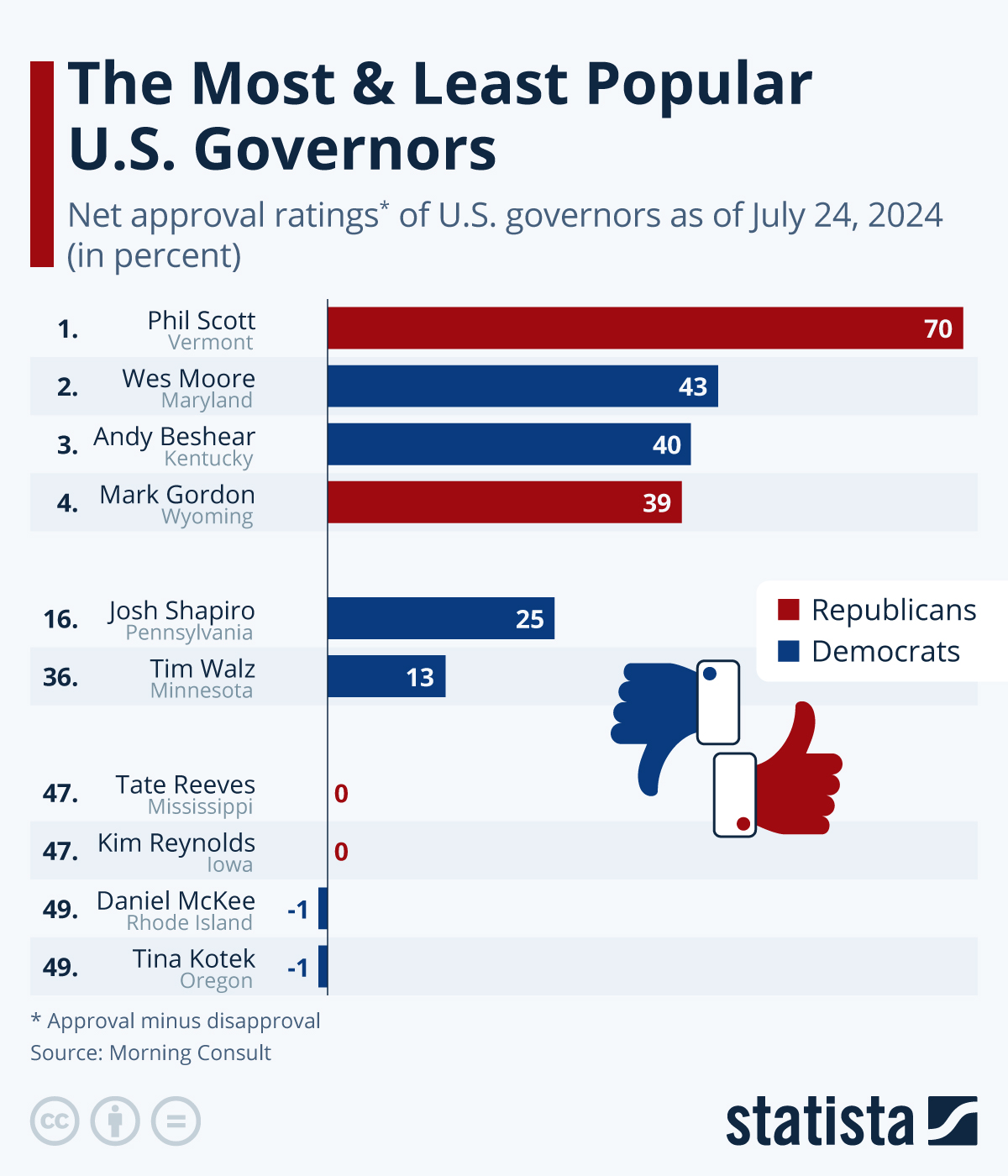
These Are The Most (& Least) Popular US Governors
With a net approval rate of 13 percent, Democratic nominee for the vice presidency, Tim Walz, is only the 36th most popular governor in the country. He currently is the first in command in Minnesota.
However, as Statista’s Katharina Buchholz reports, other governors who were reportedly being considered for Kamala Harris’ running mate in the upcoming 2024 election are much more popular at home, namely Andy Beshear, who has a net approval rate of 40 percent in Kentucky, and Josh Shapiro of Pennsylvania, who places 16th with a net approval of 25 percent. This is according to data collected by Morning Consult.
You will find more infographics at Statista
However, according to NBC, Walz and Harris reportedly got along best in person and the Democratic nominee for president felt that he was best suited for a role of supporting the president loyally.
Walz, who has (admittedly controversial) military experience in the Army National Guard, worked a blue collar job in addition to having been a teacher and is a gun-owning hunter, is hoped to appeal to moderates and voters from non-coastal states and therefore complement Harris’ profile.
Voters describe Walz as “normal” and “genuine”, but his policies are progressive despite his regular guy image, which might have also endeared him to Harris and her campaign. However, Walz’s stance has also caused pushback among more conservative voters in Minnesota, resulting in a lowish net approval.
Additionally, he has been criticized both for his handling of the Covid-19 pandemic as well as the protest that followed the death of George Floyd at the hands of police in Minneapolis in 2020.
Loading…
Originally Posted at; https://www.zerohedge.com//
Stay Updated with news.freeptomaineradio.com’s Daily Newsletter
Stay informed! Subscribe to our daily newsletter to receive updates on our latest blog posts directly in your inbox. Don’t let important information get buried by big tech.
Current subscribers:

